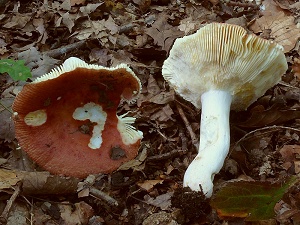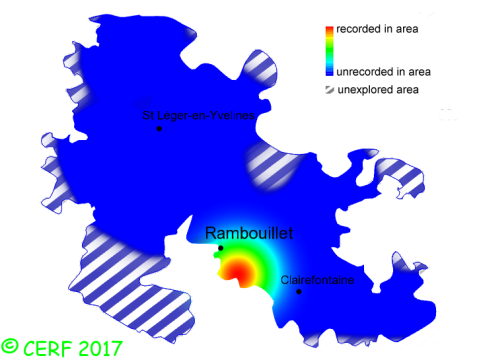| Russula maculata Quél. & Roze |
|
|
|
|
|
|
The cap is coral rose to orange, convex then quickly expanded and depressed; its margin is smooth. The cap surface is smooth, matt in dry weather, viscid in wet weather. The stem is white then brown, without ring. The flesh is white, unchanging; its taste is acrid; the odour is of apples, rose or resin; its texture is grainy (breaking like a chalk stick). The gills are yellowish, free to emarginate or slightly adnate, crowded . The spore print is pale ochre to ochre. This species is mycorrhizal. It grows on the ground, in broad-leaved woods, on a rather calcareous soil, most of the time with beech, but also with oak, hornbeam. The fruiting period takes place from July to November.
Chemical tests : flesh becoming pale ochraceous when in contact with iron sulphate; slow reaction to Gaïac (blue). Distinctive features : Coral-red to pink cap, with rusty spots; white then yellow gills; odour of pencil wood; slightly acrid taste; on calcareous soil Russula maculata is rare and confined in the forest of Rambouillet, and is infrequent, more generally speaking . | ||
|
page updated on 14/01/18

